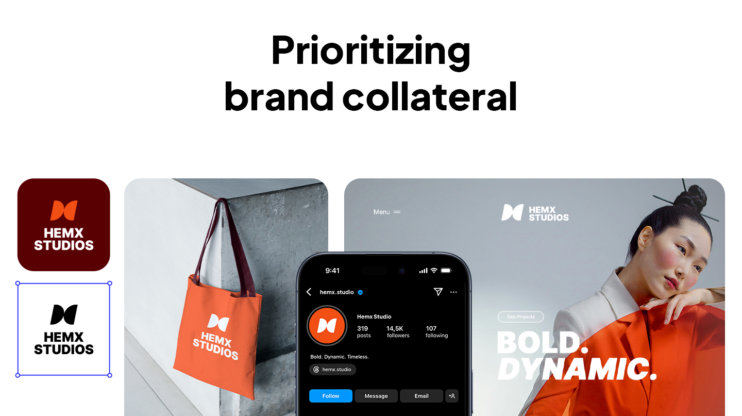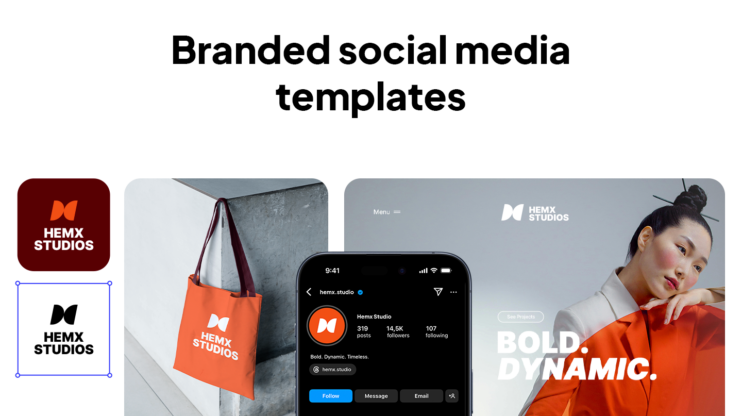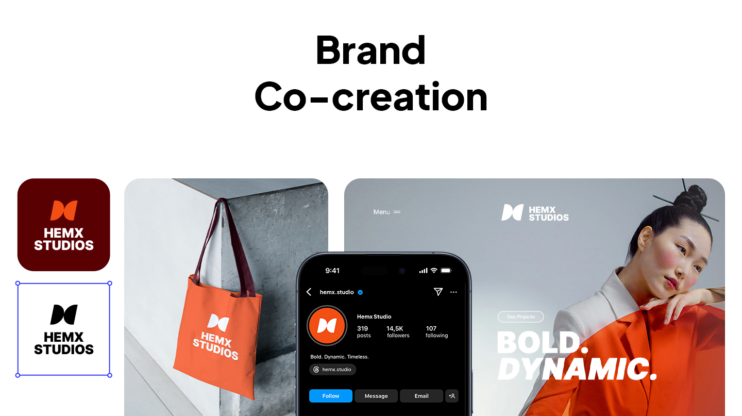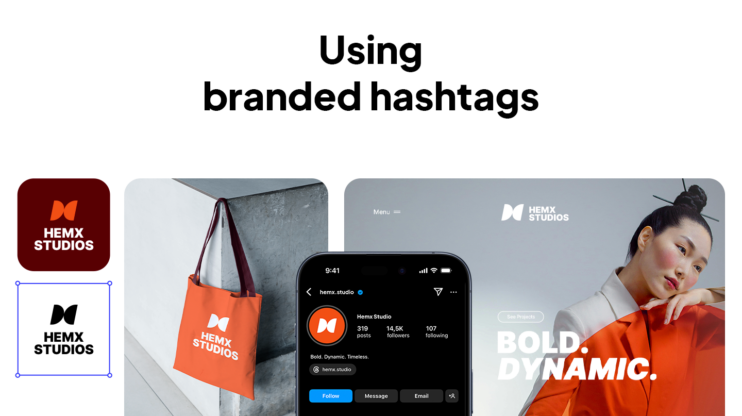Start by using them to replace generic marketing claims with real customer proof. You probably already have powerful feedback sitting in your inbox. A glowing review. A spontaneous thank-you in chat. A line from a sales call that made you think, “That’s exactly how we want to be described.”
Customer testimonials and reviews are some of the most powerful print marketing assets you already own. Used well in brochures and one-pagers, they can do what no headline or product pitch can: build trust, reduce friction, and help someone decide to choose you.
This guide will show you how to choose and feature testimonials in printed marketing materials like sales one-pagers, leave-behind brochures, banners, and handouts. You’ll also get tips from the Director of Customer Care at 10Web on how to spot the quotes that actually influence buying decisions. Let’s break down how to turn casual praise into conversion gold, on paper.
Why are testimonials effective, and how to spot the right one?
92% of people trust peer reviews more than traditional marketing copy. When someone’s deciding whether to trust your brand, what you say about yourself only goes so far. What really matters is what others say about you. That’s why customer testimonials, when used well, can make a great shift in your print marketing.
However, a testimonial like “Great service!” might feel nice to read, but it won’t help someone on the fence make a decision. So how do you know when a quote is actually worth using?
A strong quote should highlight a pain point that’s common, demonstrate product value, or show what sets us apart.
A strong one usually checks at least one of these boxes:
- It shows a clear, specific benefit or result (e.g. “We cut onboarding time from 14 days to 3 with [product name].”)
- It highlights a relatable pain point (e.g. “We tried 3 different tools before this one finally worked for our remote team.”)
- It points to a clear differentiator (e.g. “Unlike other platforms, their support team actually felt like a partner.”)
In other words, the customer testimonials you choose shouldn’t focus only on what happened and celebrate your brand; they should speak directly to someone else’s doubt, goal, or need.
What kind of testimonials can you use in print, and where?
Depending on where you’re using customer testimonials, you’ll want different print formats that match how people consume content in that spot.
When someone grabs your one-pager at a sales meeting, they glance at it while checking their phone, then stuff it in their bag. That’s reality. Your printed materials need to work in moments, while people are distracted, in a hurry, or long after you’ve walked away.
Your customer quotes can shine in these quick-scan situations, but only if you match the right testimonial style to how people will use the page. Here are five testimonial formats that work beautifully in brochures, one-pagers, and handouts.
1. Short quote testimonials
These are your quick wins: short, snappy quotes that get right to the point. They’re perfect for moments when you don’t have much space or time to grab attention, especially if you can include a name, title, or photo for extra credibility.
Why it works:
- Super easy to drop into just about anything.
- Great for highlighting one clear benefit or reaction.
Perfect for: Product highlight sections, front/back covers of brochures, sidebars or quote callouts in one-pagers.
Example: “They actually listened, and got us set up in a day. That alone was worth it.”
2. Case study snippets
Think of this as a quote with backup, usually paired with statistics/numbers or a quick before-and-after story.
Why it works:
- Showcases both results and experience.
- Helps buyers feel confident you’ve done this before.
Perfect for: Sales one-pagers, capability brochures, leave-behind handouts for pitches or trade shows.
Example: “We dropped our churn rate by 42% in 90 days, without overhauling our process.”
3. QR-linked video testimonials
Yes, you can still use videos in print, with a QR code. Link to a video testimonial and add a short quote or caption next to the code so readers know what to expect.
Why it works:
- Adds emotional impact and real voice to your print piece.
- Gives your handout an interactive dimension.
- Easy to update the video later without reprinting the brochure.
Perfect for: Sales handouts with QR codes, product sheets at trade booths, direct mail flyers.
Even casual smartphone videos without any fancy production do the work. You just need to make sure the sound is clear and the message is heartfelt. Zhanna’s view aligns with this:
“Longer stories give context. They show where we met the customer’s needs, and where we almost didn’t.”
Let people speak freely, and don’t edit the realness out.
4. Third-party reviews and ratings
You can absolutely include ratings and review excerpts from platforms like Google, G2, Trustpilot, and Yelp in printed marketing, especially if you’re trying to boost credibility fast.
Why it works:
- They feel honest, and that builds credibility fast.
- You can reuse star ratings, badges, or even pull quotes from them.
Perfect for: Sidebar sections in brochures, “why choose us?” grids on one-pagers, print ads or promo inserts
Example: “4.9 stars from 300+ customers” can say more than a paragraph ever could.
Use tools or plugins to bring these into your site without extra work.
5. Story-based testimonials
These are longer, narrative-style quotes that go into the full customer journey. They work best in printed materials that people actually sit down to read, like catalogs, case studies, or deep-dive leave-behinds.
Why it works:
- Let readers see themselves in the story.
- Perfect for bigger decisions, emotional purchases, or high-investment products.
Perfect for: Full-page spreads in capability brochures, sales booklets and printed case studies, founder letters or company story sections
Example: “Honestly, I wasn’t sure this would work. But after one call, we were up and running, and it changed our entire onboarding experience.”
These are especially useful if you’re selling transformation, not just features.
Where does each testimonial type fit in your sales funnel?
Besides using the right customer testimonials in the right place, it’s also really important to pay attention to what’s the purpose of using that testimonial there. Some client testimonials are perfect for building early trust, while others help seal the deal. Here’s how to match testimonial types to each funnel stage:
| Funnel stage | Best testimonial types | Why it works |
| Awareness |
|
These build instant credibility and show you’re trusted by real people. Perfect for quick scans and first impressions. |
| Consideration |
|
At this point, people want proof. These formats mix emotional and factual trust, showing both results and real stories. |
| Decision |
|
This is where depth matters. Longer stories help potential buyers picture themselves succeeding with you. They ease last-minute hesitation. |
How can you use testimonials in print marketing more effectively?
To use testimonials more effectively, think like a customer: what objections are they holding onto and whose words can calm that hesitation. For example:
- Drop short quotes near CTAs or offer sections: Use one-line testimonials right next to pricing, trial prompts, or contact info to reduce hesitation at the moment of decision.
- Bold the strongest line in a quote and place it beside key visuals: Eye-catching pull quotes next to product images or benefits guide the reader’s attention and build trust at a glance.
- Pair case study snippets with product or service descriptions: Add short result-focused quotes next to onboarding steps, features, or solution details to reinforce credibility with proof.
- Use story-based testimonials where readers slow down: Include longer quotes in a dedicated “Customer Story” section, back page, or alongside a founder note to build emotional connection.
- Reuse third-party reviews, star ratings, and trust badges wherever credibility matters most: Place them in a sidebar, footer, or comparison section to validate claims and reassure skeptical readers.
How to choose testimonials that influence decisions?
Just because a customer said something nice doesn’t mean it should be used in your brochure or one-pager. Let’s see how you can filter out what’s nice and find what’s persuasive.
1. Match the quote to your buyer persona
The testimonial should feel like it’s coming from someone your next buyer would relate to, or aspire to be.
- If you sell to product managers, a quote from a CTO might be inspiring, but one from a fellow PM feels more grounded.
- Selling to small agencies? A line from a solo founder hits harder than one from a Fortune 500 exec.
2. Prioritize specificity and measurable outcomes
Details make people actually believe you, and numbers show them what’s really possible. So instead of something vague like “This product saved us so much time,” go with something specific: “We didn’t even change how we work, but we’re saving 6 hours every week now!” When people can picture that exact same win happening to them, they’re way more likely to think “Yeah, I could use those 6 hours back too.”
3. Include name, title, company, or industry (when possible)
It doesn’t have to be all four, but the more context you give, the more believable the quote becomes. “Jared K., Director of IT at a 120-person law firm” tells a clearer story than “Happy customer.” Plus, if your audience sees someone from their field getting results, you’ve just handled half their objections.
4. Watch for red-flag phrases
Some praise is just too generic to be useful:
- “Great service”
- “Amazing product”
- “I would recommend it!”
These seem good but don’t reveal anything actionable or unique. When you see something vague, dig deeper: what exactly made it great? As Zhanna highlighted, when a quote surfaces a broader problem and explains how we solved it, it becomes reusable across teams. That’s your north star: quotes that capture a pain point and resolution are the ones that travel far, and sell better.
Takeaway: Print-ready quote checklist
Before you feature a testimonial, give it a quick gut check. Does it…
- Describe a real problem?
- Offer a concrete benefit or transformation?
- Come from someone your audience respects or relates to?
- Feel authentic: not scripted, exaggerated, or fluffy?
If you’re nodding “yes” to most of these, you’ve got a keeper.
How to systematically collect testimonials (without chasing them down)?
Some of your great customer testimonials are hiding in plain sight, in chats, emails, support tickets, or offhand comments during sales calls. You shouldn’t wait for them, but to build lightweight systems that make it easy to catch and surface them consistently.
At 10Web, we have a dedicated feedback Slack channel. Agents tag quotes, and we surface both praise and complaints. It’s part of staying aligned with our customer. This can be a useful channel for you as well, or you might choose other simple workflows:
- Add a quick “How did we do?” survey after support interactions or onboarding.
- Keep an eye on your support tickets and live chats – that’s where customers often drop genuine praise or talk about how you solved their problem.
- Set up a shared Slack channel or email thread where your team can quickly share great quotes they come across during their day.
Just remember: Always ask permission before using someone’s words, especially if you’re in a regulated industry or dealing with other businesses. A simple opt-in checkbox on surveys works, or just shoot them a quick message asking if it’s cool to quote them.
How can you design testimonials that get noticed?
Even the best testimonial can get completely ignored if it’s crammed into tiny text on the button of your one-pager or lost in a bunch of other content. How you present these quotes matters just as much as what they say. Here’s how to make them catch people’s attention:
- Give them space to breathe with pull quotes, boxes, or a subtle background color
- Include customer photos or company logos when you can (it makes everything feel more real)
- Break up longer stories with bold text, bullet points, or little headers so they’re easier to scan
- Keep the same style everywhere – sales materials, PDFs, brochures – so everything feels polished
If you’re starting fresh with your brand or just want to get everything looking consistent, make sure your logo, fonts, and overall vibe match across all your brand assets. When everything looks like it belongs together, your testimonials feel more trustworthy no matter where someone sees them.
Something like the 10Web Brand Kit can be a lifesaver if you want things to look professional but don’t want to deal with the headache of designing everything yourself. It’ll create your logo, pick your colors, write your tagline, and handle all the other brand stuff in just a few seconds, so you can focus on actually running your business instead of playing around in design software.
Design don’ts:
- Don’t dump 10 quotes on one page, curate and space them out.
- Don’t shrink the text just to fit more, legibility matters.
- Don’t feature anonymous or overly polished quotes. They often feel scripted and less believable.
Describe your brand and get complete brand assets.
Go from idea to brand in minutes.
Conclusion
Customer testimonials are persuasive tools you should be using in print marketing stack. The right quote, in the right place, from the right voice can do what no pitch ever could: make someone feel seen, understood, and ready to say yes.
Start with what you already have. That sentence in a support chat. That review is buried in your inbox. Don’t wait for the perfect pull quote, just create a simple system to collect, organize, and use what your customers are already telling you. Because at the end of the day, you already have advocates. Now it’s time to make them visible through your brochures and one-pagers.
FAQ
What is a customer testimonial? Where should testimonials go in a brochure or one-pager? Do testimonials really work in brochures? What is the purpose of using testimonials in marketing?
Describe your brand and get complete brand assets.
Go from idea to brand in minutes.










